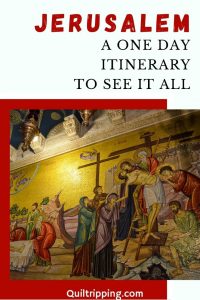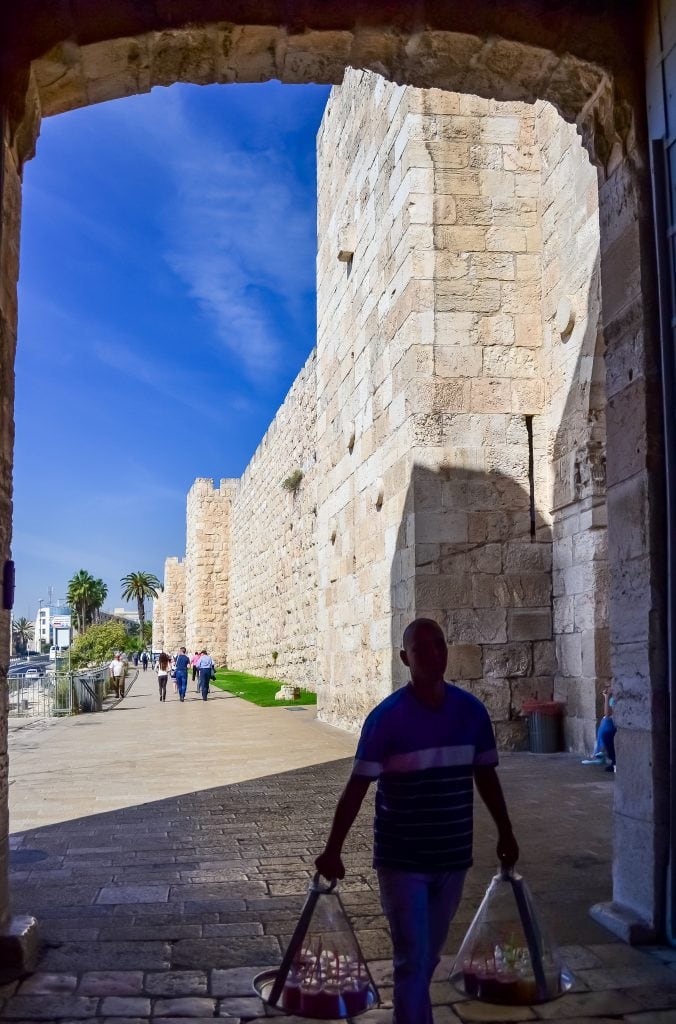Last Updated on 02/16/22 by Rose Palmer
On our recent trip to Israel and Jordan, a visit to the UNESCO World Heritage listed city of Old Jerusalem was a high priority. Our schedule allowed for only one day in Jerusalem, but we managed to make the most of our time as we discovered why this city is such a historic location for three of the world’s biggest religions.
There are many tour options that take you to the major historic sites in Israel and Jordan, but I like to travel independently as much as possible so that I can enjoy the sights at my own pace. So, when my husband and I were planning our 12 day itinerary to Israel and Jordan, I did a lot of reading and research to figure out how to independently see everything that we wanted to on our schedule.

Jerusalem was going to be our first stop, and after landing at the Tel Aviv Ben Gurion airport mid afternoon, we took a prebooked transfer to our hotel in Jerusalem (I like to use Viator.com to book my airport transportation). The roughly one hour drive gave us our first glimpses of the Israeli countryside, though since we were visiting in mid November, sunset was at 4:40 PM and we were not able to see all that much before it got dark.
Our driver dropped us off at the Sephardic House Hotel which I picked because of its prime location in the heart of the Old City’s Jewish Quarter. With only one day here, I did not want to waste time in traffic getting to the historic sites. The hotel was quite comfortable, and the staff was very pleasant.
Old City Jerusalem is only about 0.35 square miles in size, which I hoped would make it easy for us to tour in one day. The city’s population is roughly divided into four physical quarters (going counterclockwise): Jewish, Muslim, Christian and Armenian. Besides wandering the maze of old city streets, we were primarily interested in seeing the three major religions sights: the Dome of the Rock, the Western Wall and the Church of the Holy Sepulcher.
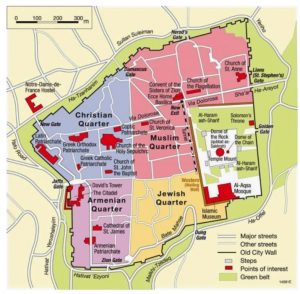
Visiting the Dome of the Rock and the Temple Mount

It’s a good thing that we were still jet lagged and were up very early the next morning. First on the list on our one day in Jerusalem was a visit to the Dome of the Rock. This important Islamic site is only open to tourists for just a few hours each day. (We were visiting in November and winter hours are 7:30-10:30 AM and 12:30-1:30 PM. Summer hours start one hour later, 8:30-11:30 AM and 1:30-2:30 PM.)
The Temple Mount where the Dome of the Rock is located has eleven gates, but only one entrance is open to non-Muslims. A security checkpoint accessed from the Western Wall Plaza in the Jewish quarter and a wooden walkway to the Mughrabi Gate provided our only access.

The Temple Mount is religiously significant to the Jewish, Christian and Muslim faiths. The rock on the top of the mount is believed to be the location where Abraham (a central figure in all three religions) offered to sacrifice his son Isaac. For the Jewish faith, this is also where King Solomon built the First Temple. Muslims believe that Mohammed ascended into heaven from the rock located on top of the mount.
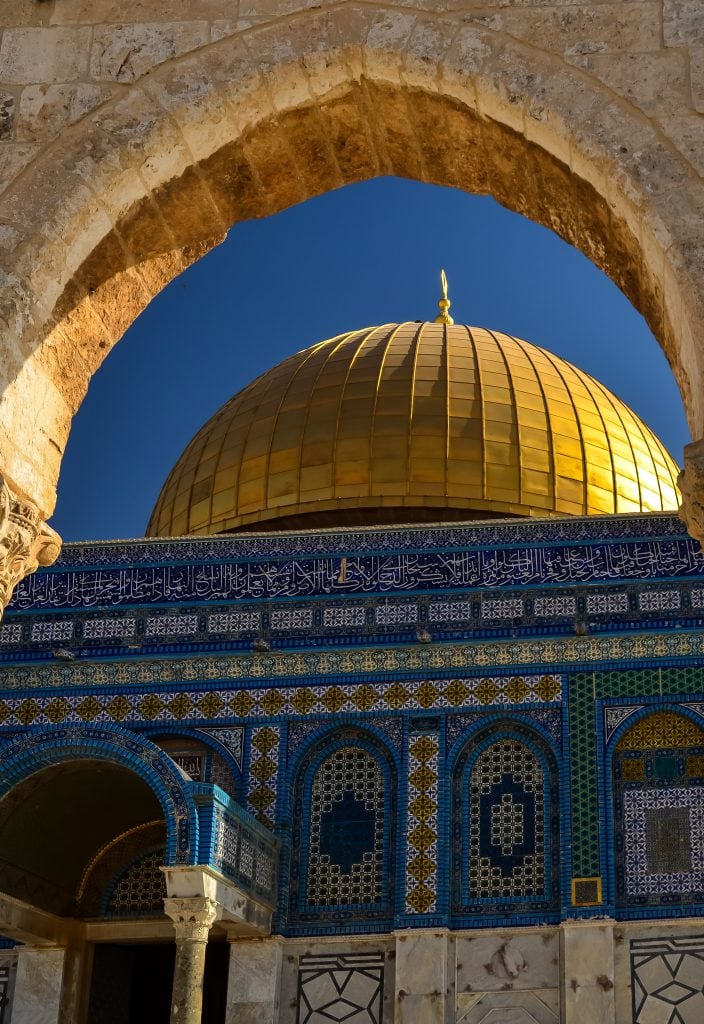
The current flat top plaza look of the Temple Mount was built by Herod in 19 BCE. He built walls and filled in gaps with dirt and rubble to form a larger level open space where he rebuilt the Second Temple. Later, the area came under Byzantine rule, and then eventually was conquered by the Arabs.

In 691 the first dome covered shrine was built over Mohammed’s foundation rock. The original octagonal structure and dome was supposedly influenced by nearby Byzantine churches. The current stunning appearance with its ornate Turkish tiles and gold dome was designed by the 16th century Ottoman ruler Suleyman the Magnificent.
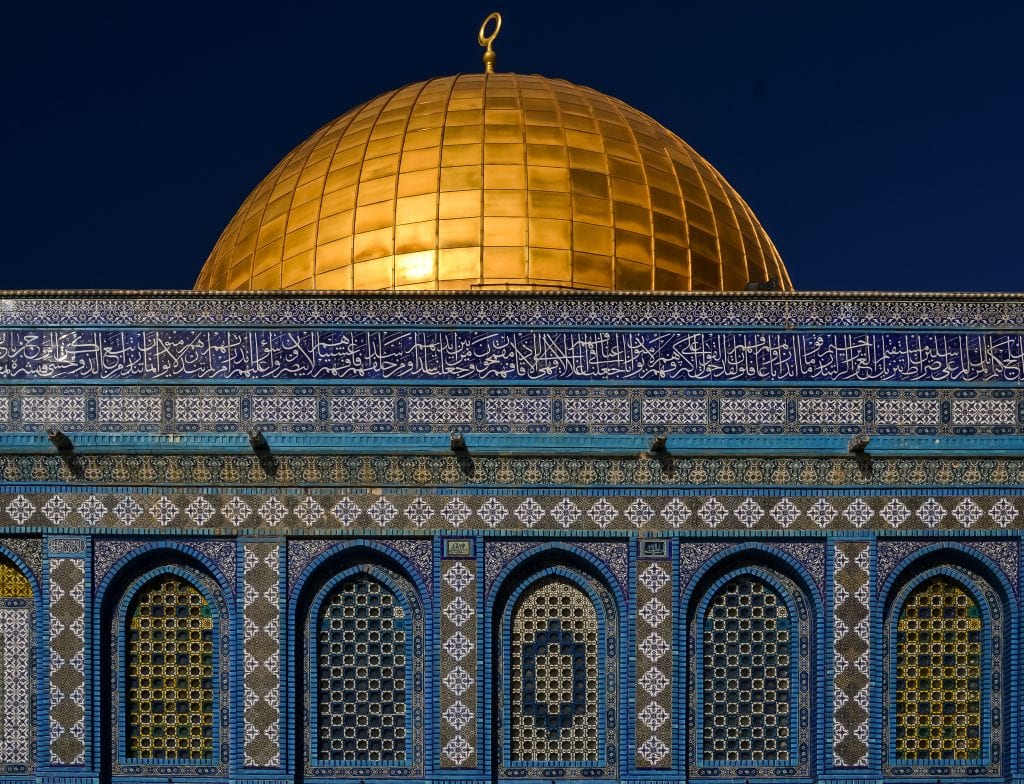
Non-Muslims are not allowed to go inside the Dome of the Rock, so we spent a very pleasant hour walking around the large open plaza, taking in the views of Jerusalem from the hilltop and admiring the beautiful tile patterns on the outside of the Dome of the Rock and the adjacent Dome of the Chain.

For detailed information on how to see the Dome of the Rock be sure to also read my post Tips for Visiting the Dome of the Rock and the Temple Mount in Jerusalem.
The Western Wall
After leaving the Dome of the Rock, we headed back to the Western Wall for a closer look. This is just one section of the wall that was built by Herod surrounding the Temple Mount and the large stones visible near the base of the wall are still left from his time period.

This section of the wall is sacred to the Jewish Faith as it is the closest that they can get to the Foundation Rock on the top of the Temple Mount. The prayer area in front of the wall is divided into a men’s and women’s section. Anyone can enter the space, but men need to wear a head covering (paper skull caps are available at the entrance). Respectful dress is also expected which means shoulders and knees need to be covered.

It is common practice to leave small slips of paper with a prayer in the cracks of the wall. A few times a year these papers are collected and buried in a Jewish Cemetery.
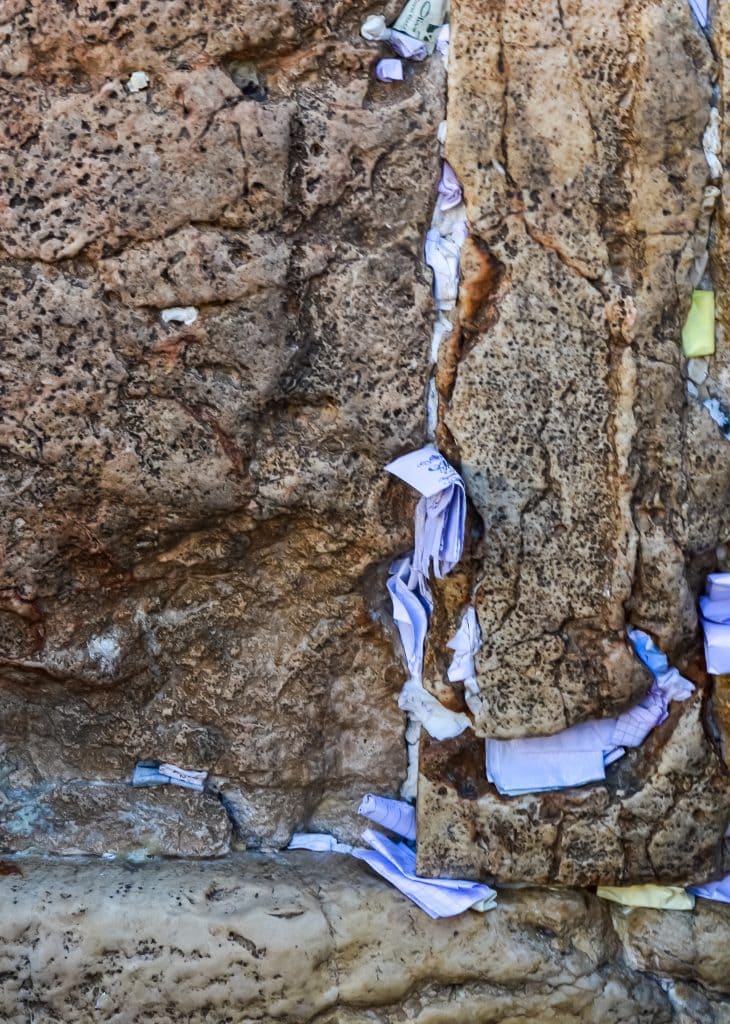
Free Walking Tour of Jerusalem
From the Western Wall we took the short 10 minute walk to the Jaffa Gate to take part in the Sandeman free tour of Jerusalem. I have enjoyed Sandeman’s free tours in a number of destinations as a quick introduction to the locale.
With the limited amount of time that we had and since the historic core of Jerusalem was not that large, this quick two hour overview tour made sense. While there is no up front payment for these tours, I always tip well at the end as the guides I have had have always been excellent and well versed on the topic.

The tour was exactly what we wanted. The guide took us through the winding maze of streets in all four quarters of the Old City, explained the history, the religious practices and the current political state and provided guidance on how to see the major sights in more detail.

Mount of Olives Tour
We had not expected to have the time to visit the Mount of Olives, but the Sandeman Mount of Olives tour in the early afternoon worked out well with our schedule, so we chose to book it after the free Sandeman tour ended. Once again, we met our guide at the Jaffa Gate and took a quick minivan ride to the top of the next hill over, the Mount of Olives.
The 3 hour Mount of Olives walking tour started at the top with our first stop at the Chapel of the Ascension. The small building covers the spot from which it is believed that Jesus ascended to heaven.
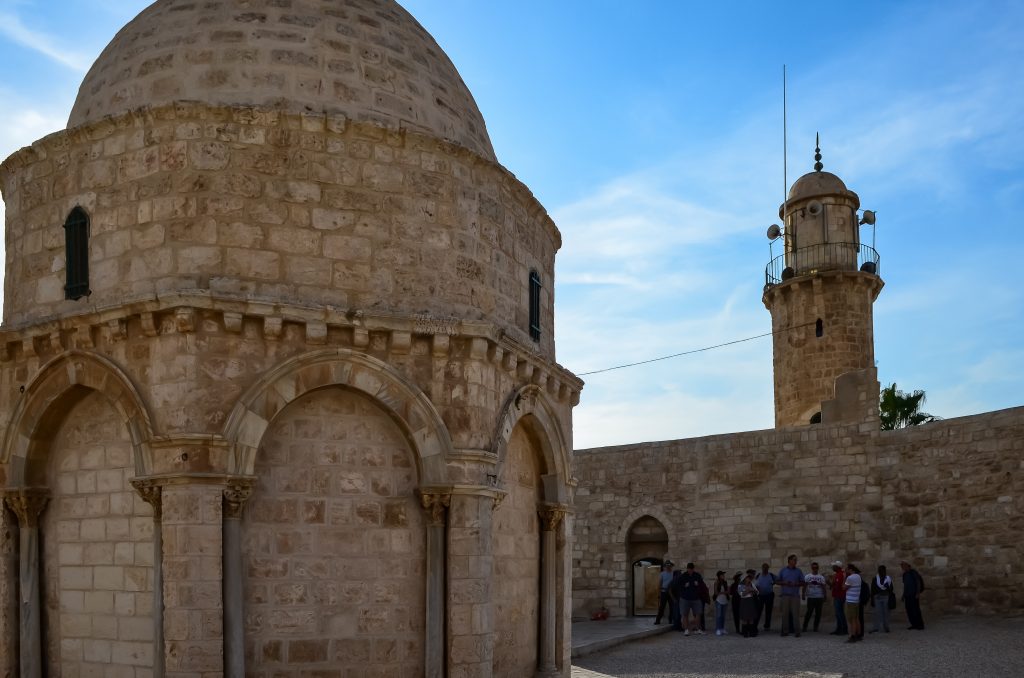
The next stop was the Church of the Pater Noster which was built on the spot where tradition says that Jesus taught his disciples the Lord’s Prayer. The walls around the church are tiled with versions of the Lord’s Prayer in 70 different languages.
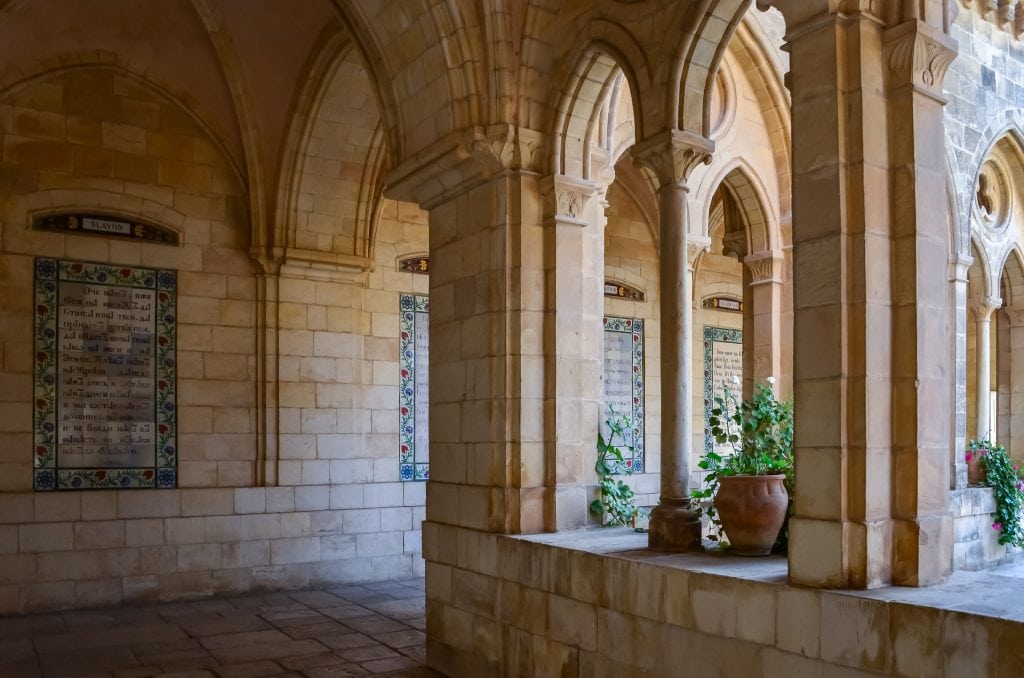
As our walk continued down the hill, we passed by the massive Jewish Cemetery. With over 70,000 graves, this is the largest and also the holiest cemetery in the Jewish faith.

After a brief look over the Garden of Gethsemane, we went on to the Church of All Nations. This church enshrines the rock in the Garden of Gethsemane where Jesus prayed before he was arrested.

Our final stop was the Tomb of the Virgin Mary. This is believed to be the site where Mary, the mother of Jesus was buried. The church is actually cut into the rock in the shape of a cross. Mary is venerated by both Christianity and Islam so there are areas for prayer for both faiths in this church.
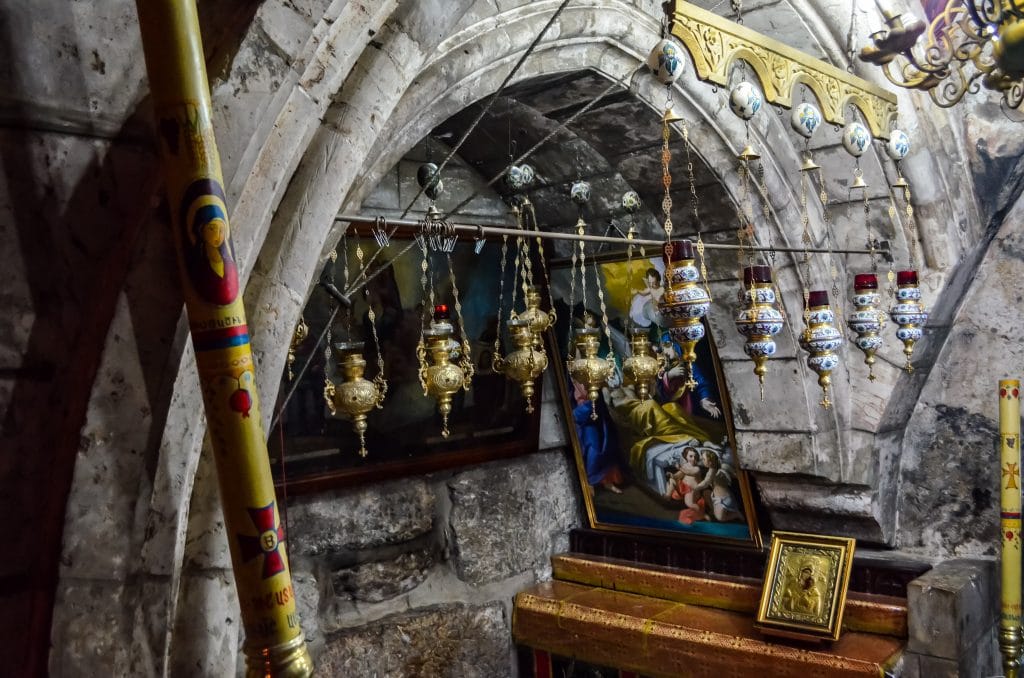
We could have visited all of these sights on our own, but the Mount of Olives tour was an efficient way to see it quickly while providing a lot of informative content.
Church of the Holy Sepulcher
We finished off the day with one final stop in the Old City of Jerusalem. We followed the Via Dolorosa to the Church of the Holy Sepulcher. The Via Dolorosa is the path through Jerusalem that Jesus walked on the way to his crucifixion. It is well marked, as are the Stations of the Cross all along the route.

The church of the Holy Sepulcher stands over what is believed to have been Calvary where Christ was crucified and also holds the tomb of Jesus Christ.

This church is nothing like the great soaring Gothic Cathedrals that I have experienced in Europe. Instead, it was more like a warren of stone rooms filled with the religious paraphernalia of each of the denominations that together run this church. There were lots of hanging lamps, candles and mosaic decorations, exemplifying the strong Greek Orthodox influence in the church. Apparently, each of the many chapels acts as a mini church for the specific denomination that uses it.
Upon entering the church, the first site we saw was the Stone of Anointing where Jesus’ body was prepared for burial. A colorful mosaic depicting the Crucifixion and the preparation of Christ’s body decorates the nearby wall.

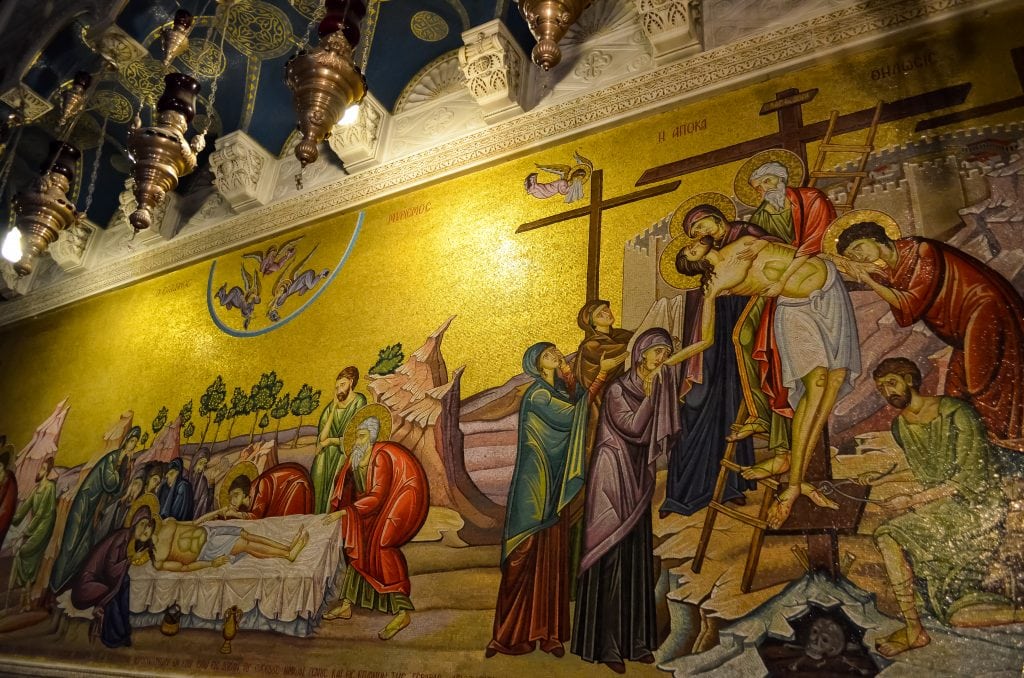
We went on to explore a few of the many chapels and the rotunda that holds the sepulcher. At the Altar of the Crucifixion, what is left of the rock of Calvary is encased in a glass box.
Despite visiting late in the day, the church was quite busy which made the tight spaces feel crowded (and made it hard to take good photos). I liked the Chapel of Saint Helena because it was out of the way in the lower level and was empty and peaceful.

Had we had more time, I think we would have benefitted from a guided tour inside the Church of the Holy Sepulcher to better understand the significance of the different spaces that we were looking at.
After such a busy day we finished with a well deserved meal of mezze (starters) and other local dishes.

It was a very full day of sightseeing and we got to see more than we expected. Yes, we could have spent more time in Jerusalem, but on the one day that we had, we managed to see all the major UNESCO sights and got a better understanding of why this city is so important to three of the world’s major religions. For me, this day demonstrated that the three religions that call Jerusalem home have a lot more in common than they have differences.
Other related stories you might like:
A 10 day Israel and Jordan Itinerary: Tips For an Independent Israel and Jordan Itinerary
Masada and Dead Sea tour from Tel Aviv: A Day Trip From Tel Aviv: Take a Tour to Masada and the Dead Sea
How to visit the dome of the Rock in Jerusalem: Tips for Visiting the Dome of the Rock and Temple Mound in Jerusalem
How to visit Petra on your own: Inside Petra by Night and Day: My Perfect Petra 2 Day Itinerary
Petra photography tips: 13 Petra Photography Tips for All Skill Levels
Thanks for visiting.
Rose
Pin this!

